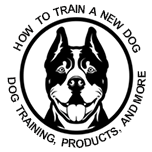How to Successfully Train Your Dog for the Arrival of Your Baby!
The impending arrival of your baby may make you anxious (for a variety of reasons), especially if it is your first. Naturally, you want to prepare as much as possible for your baby’s arrival and make sure that all of the details are taken care of, including the responsibility of integrating your baby with your dog. All of the details, at times, can be a little overwhelming. If you are unsure of how to train your dog to best accept and interact with your baby, the steps below on how to train your dog for your baby’s arrival (and be successful at it) may be of help. Start at least a few months before your baby is due and use repetition and rewards such as treats when training your dog.
First, Start with a Vet Visit:
- Take your dog to the vet. Get a complete checkup to make sure your dog does not have any kind of illness that can cause some types of related aggression.
- Get your dog spayed or neutered. This will naturally help calm them.
- Give them worm and parasite medicine.
Second, Interaction with Baby Items:
- Allow your dog to explore your baby’s room. Do not allow your dog to climb into the bed or sleep on the furniture. Set boundaries. This way, you can train your dog in what areas you want your dog to have access to.
- Sounds like rocking chairs, putting up baby gates, and other related baby noises should become something your dog is gradually introduced and accustomed to.
- Lotions, powders, baby diapers, and wipes all contain smells, get your dog exposed to these new smells. Let your dog become accustomed to the smells.
Third, Interaction with other Babies and Children:
- Take your dog to the dog park. Expose your dog to the noise of babies and children. Train your dog to recognize not to be fearful of the noise that babies or children make.
- While on leash or harness (important) allow your dog some interaction with babies and children (only at a distance at first). Monitor the dog’s interaction and be very aware of how your dog reacts, fearful, jumping, and worst of all, aggressive behaviors such as growling or trying to bite.
- Try to introduce a baby or child in familiar surroundings, such as your home.
The third step should give you a good indication of how your dog may react when you bring your baby home. If you see any sign other than a relaxed dog, please take the appropriate steps to train your dog in the properly calm and submissive behavior before your baby arrives.
Fourth, Bringing the New Baby Home:
- Greet your dog and go about as a normal routine as possible, first, before you introduce the baby to the dog. The dog will be less stressed if its needs are met. Try to regularly exercise your dog, so it is relaxed and less energetic.
- While holding the baby – Introduce the baby from a distance. Watch the reaction. Don’t ever force a dog that doesn’t want to interact with your baby. Make it a positive experience by offering a treat.
- Don’t ever leave your dog unsupervised with your baby. Even when a dog is not aggressive, it may inadvertently hurt a baby just by being playful.
By following the above steps, you can train your dog to associate your new baby with a positive experience, and your dog and baby should have a healthy relationship and be able to interact and grow up together.

